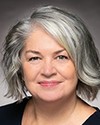Thank you very much, gentlemen, for your presentations.
I would also like to thank the residents of the town of St-Pierre-Jolys for turning out in such large numbers.
Thank you so much for a warm welcome.
My question will be in English. Don't worry.
I was quite interested in reading—and it took me two times to read—your proposal, Professor Kidd, because I had to map out the math. As you said, probably most Canadians don't need to know the mathematical formula for calculating q and so forth. We've been told that most Canadians don't want to look under the hood to know how things are calculated. From a voter perspective, it's simple because you're just putting the X. The calculation portion would be the Elections Canada officer having to create that formula to do the math.
One area of concern that we've heard is that most Canadians are not very open to the idea of adding more MPs to the plate. In your model, you mentioned increasing that to approximately 350, so 12 additional MPs to map it out.
In addition to that, you didn't mention in your brief if you preferred closed list versus open list. You had mentioned both but you didn't specify.
Now, the flip side, Professor Koop.... This is a great joint presentation. Given the fact that local representation is so important to Canadians and it is one of the guiding principles, if we were to adopt a model similar to Professor Kidd's model, what would you recommend in terms of those proportional seats? You've done a lot of work with local representation. What would you recommend? If we were to do it by region, for instance the area of Montreal, the people who would be on the proportional list probably live close to the urban centre. If they were selected, you would have a whole bunch of MPs in that riding, but further north of Montreal or south of Montreal, you wouldn't have them. Also, how would that work in terms of representation, the parachuted candidates and so on? Could you elaborate?

